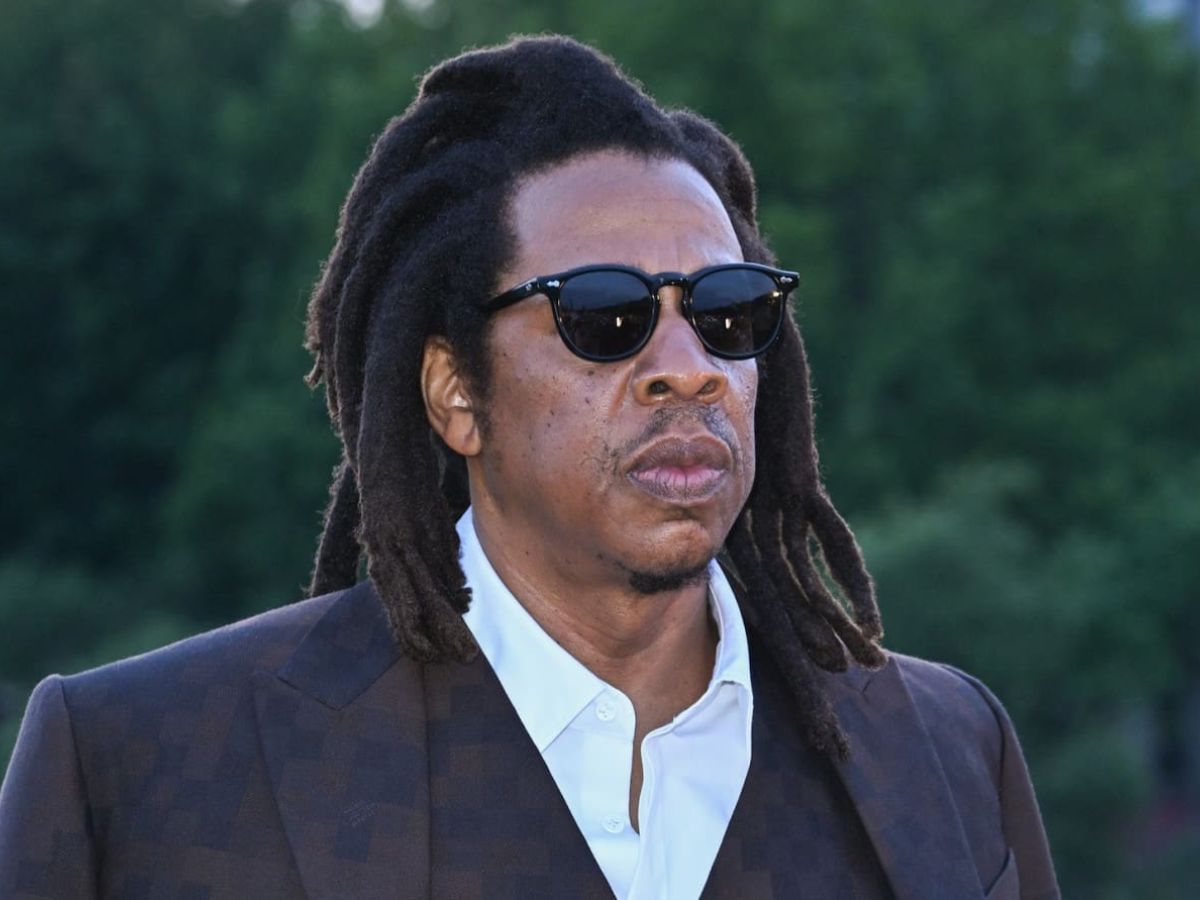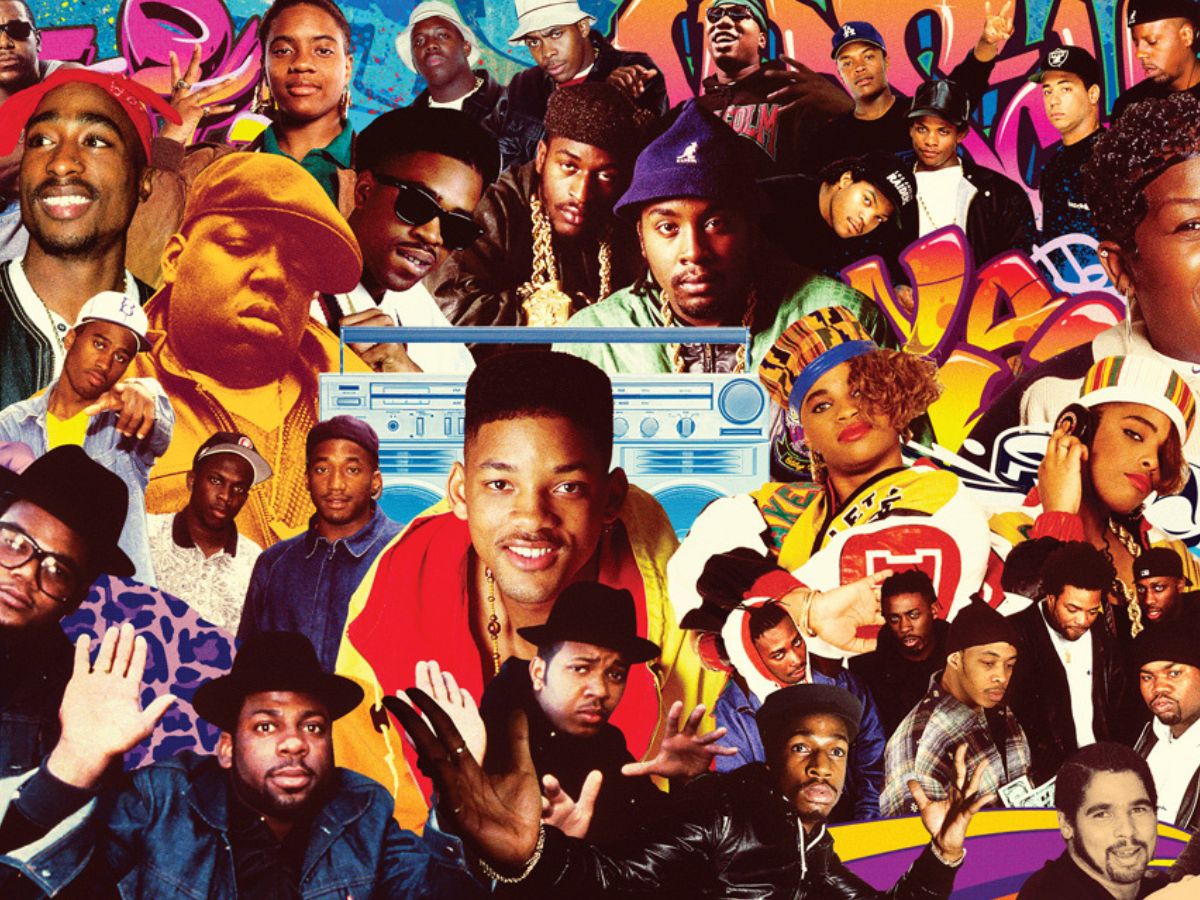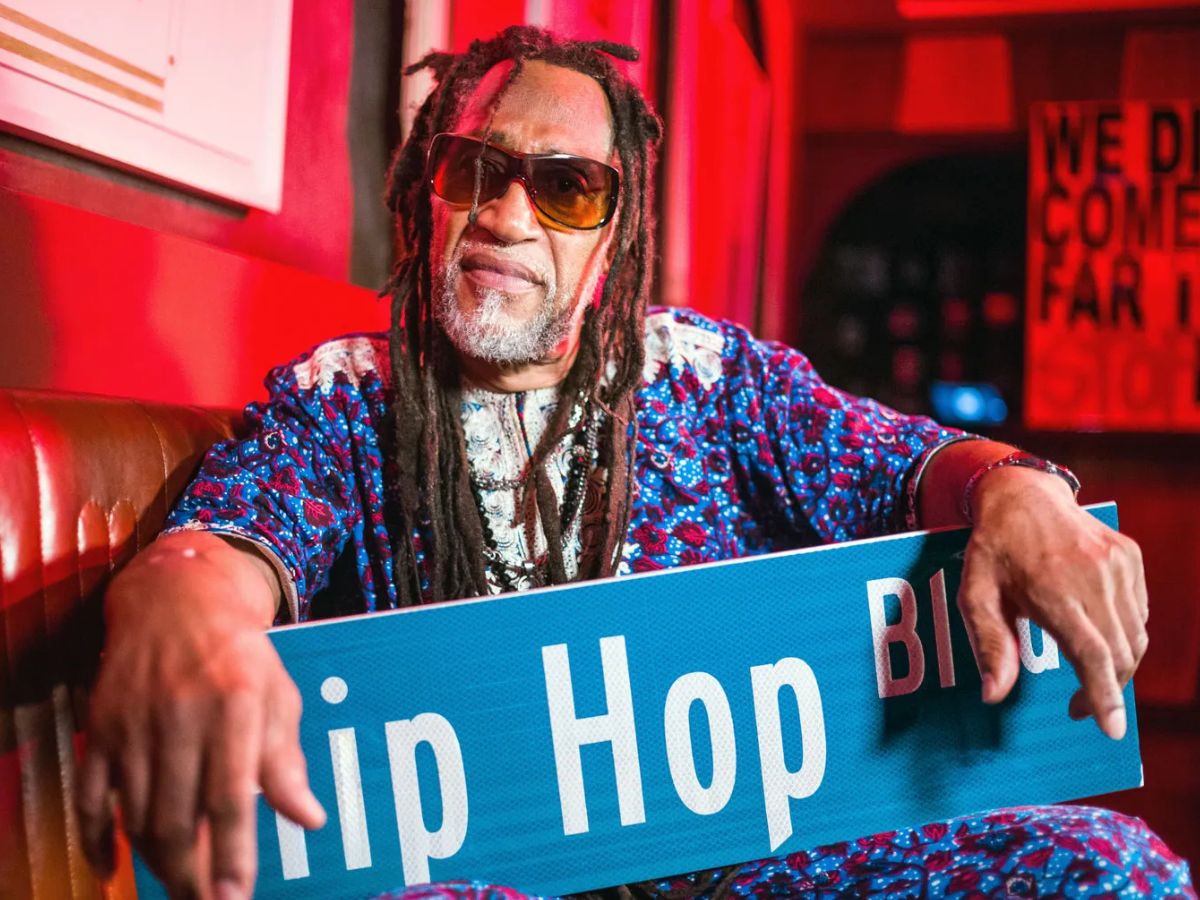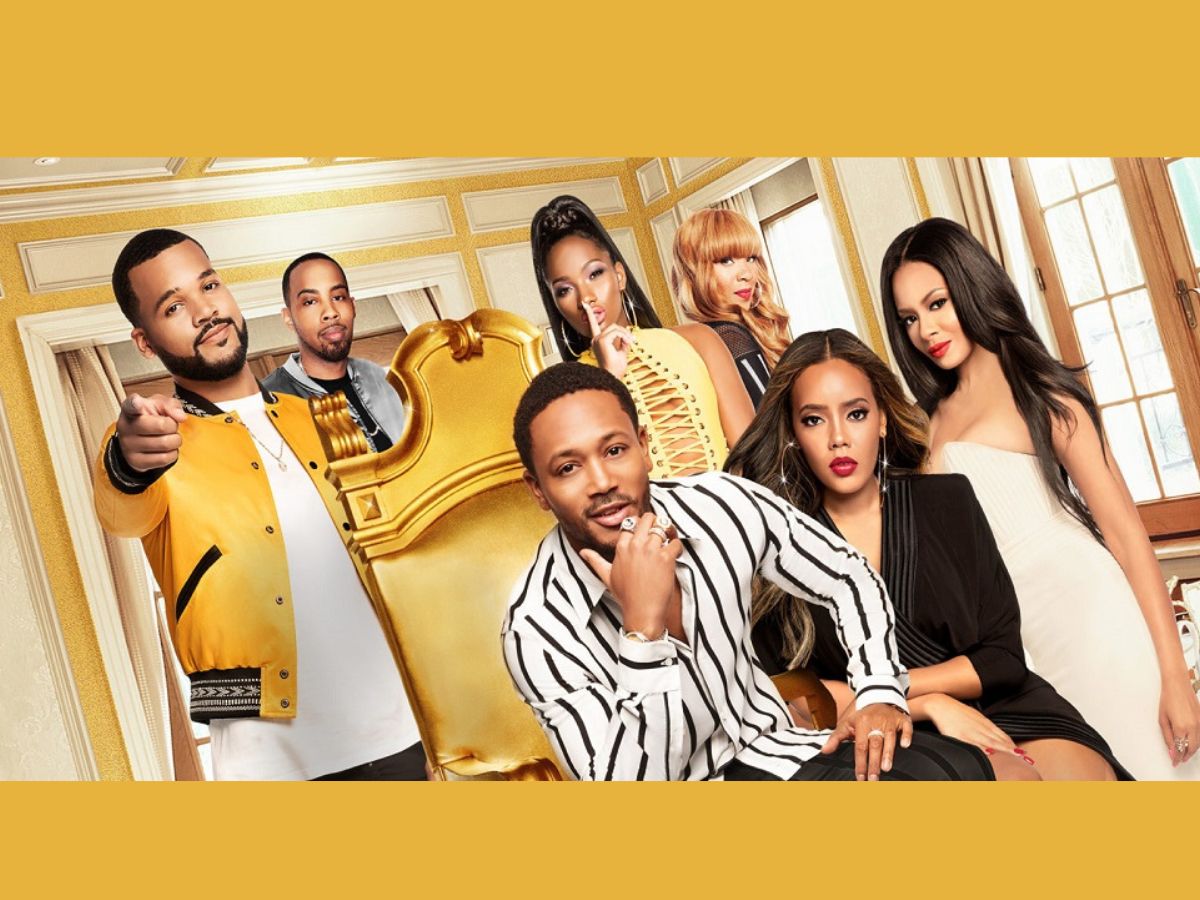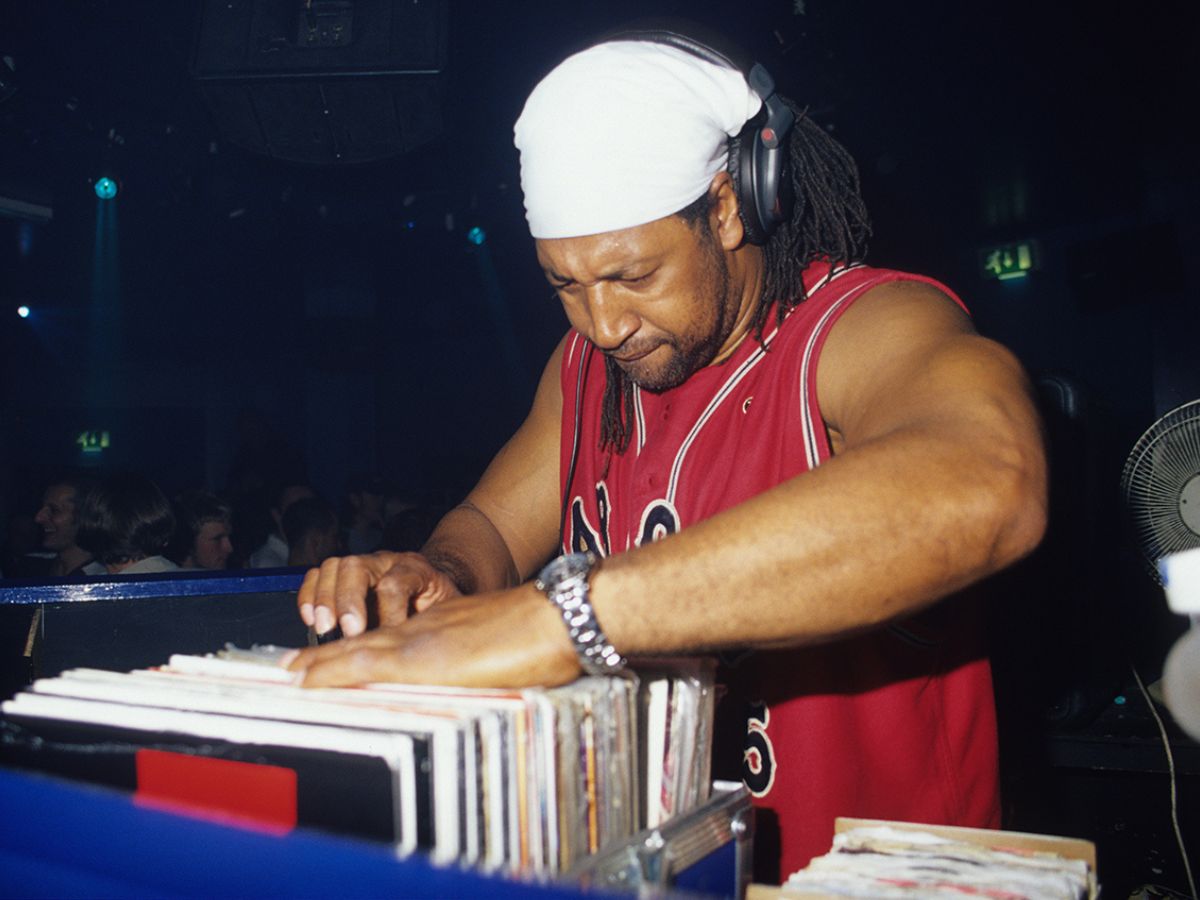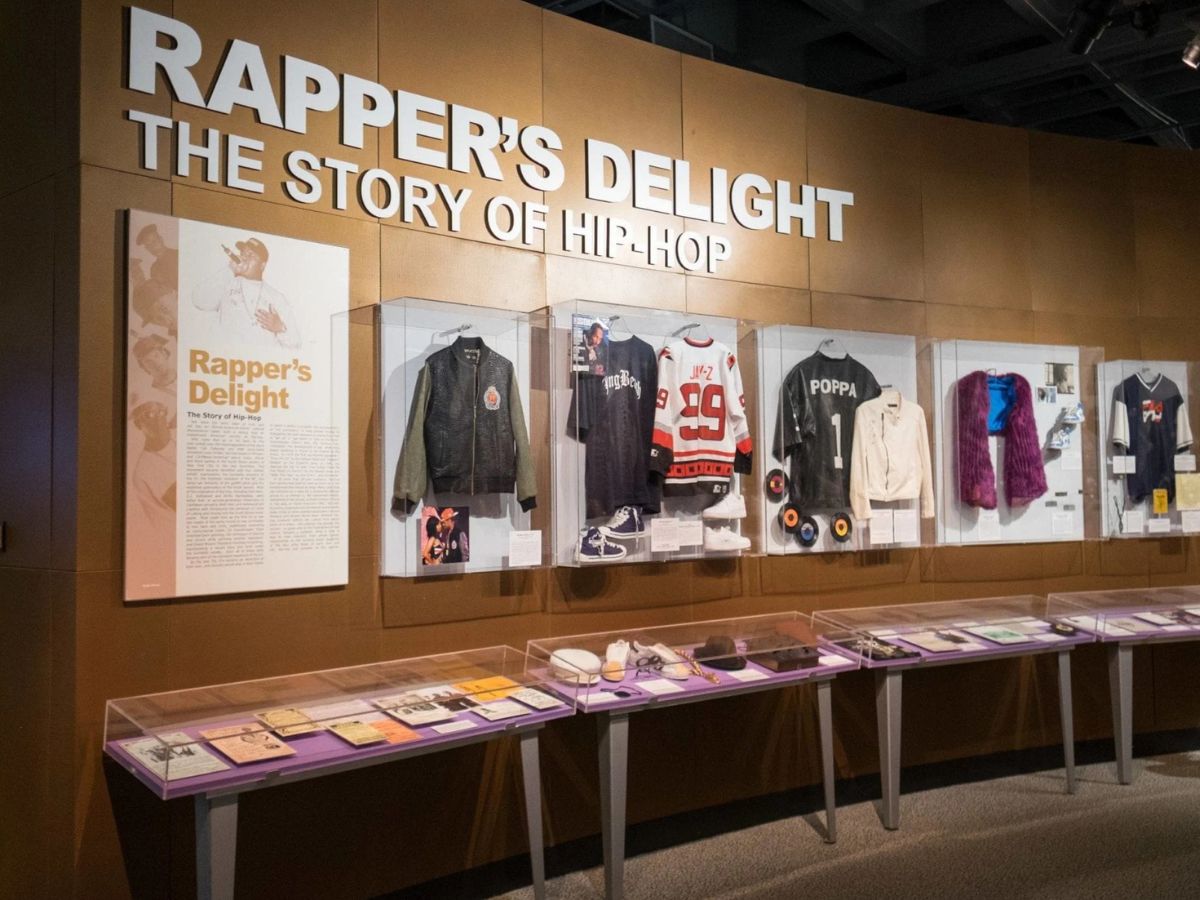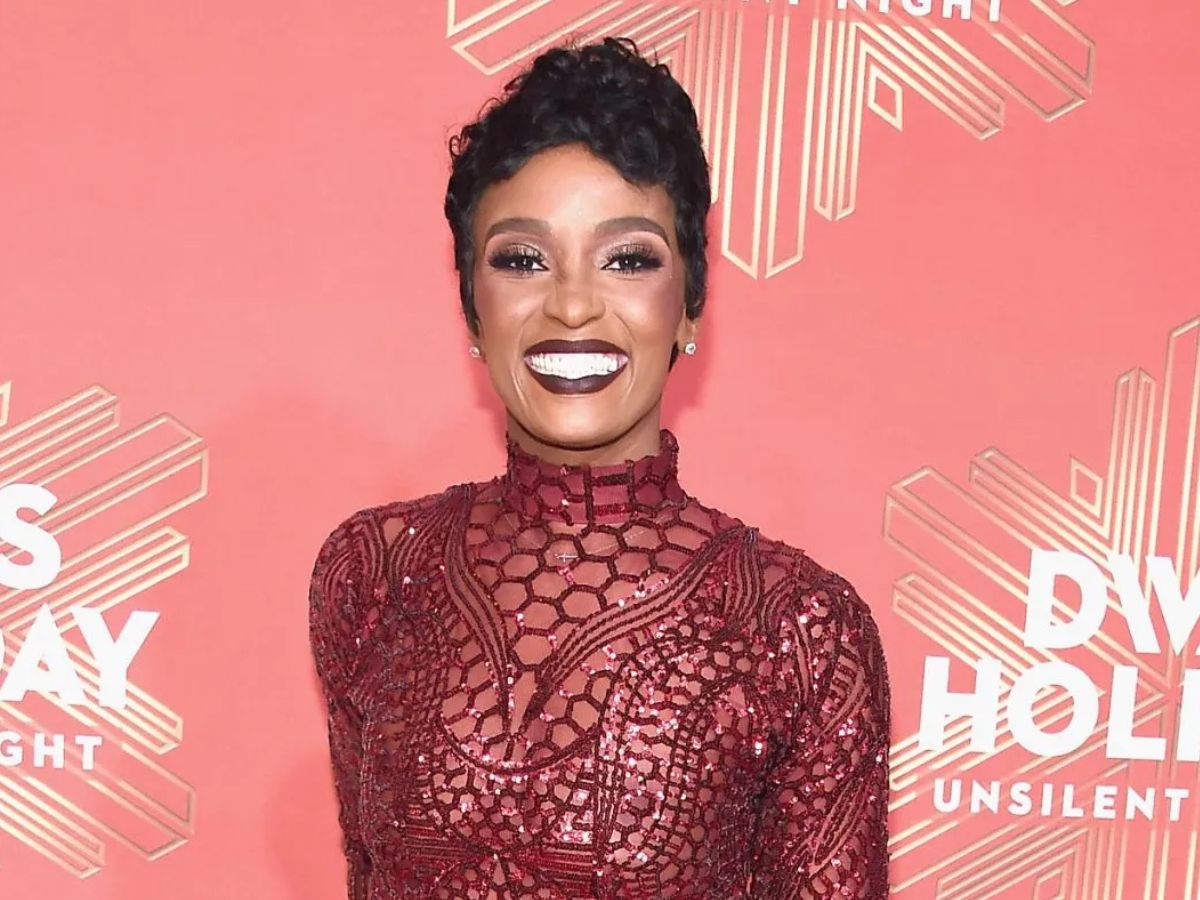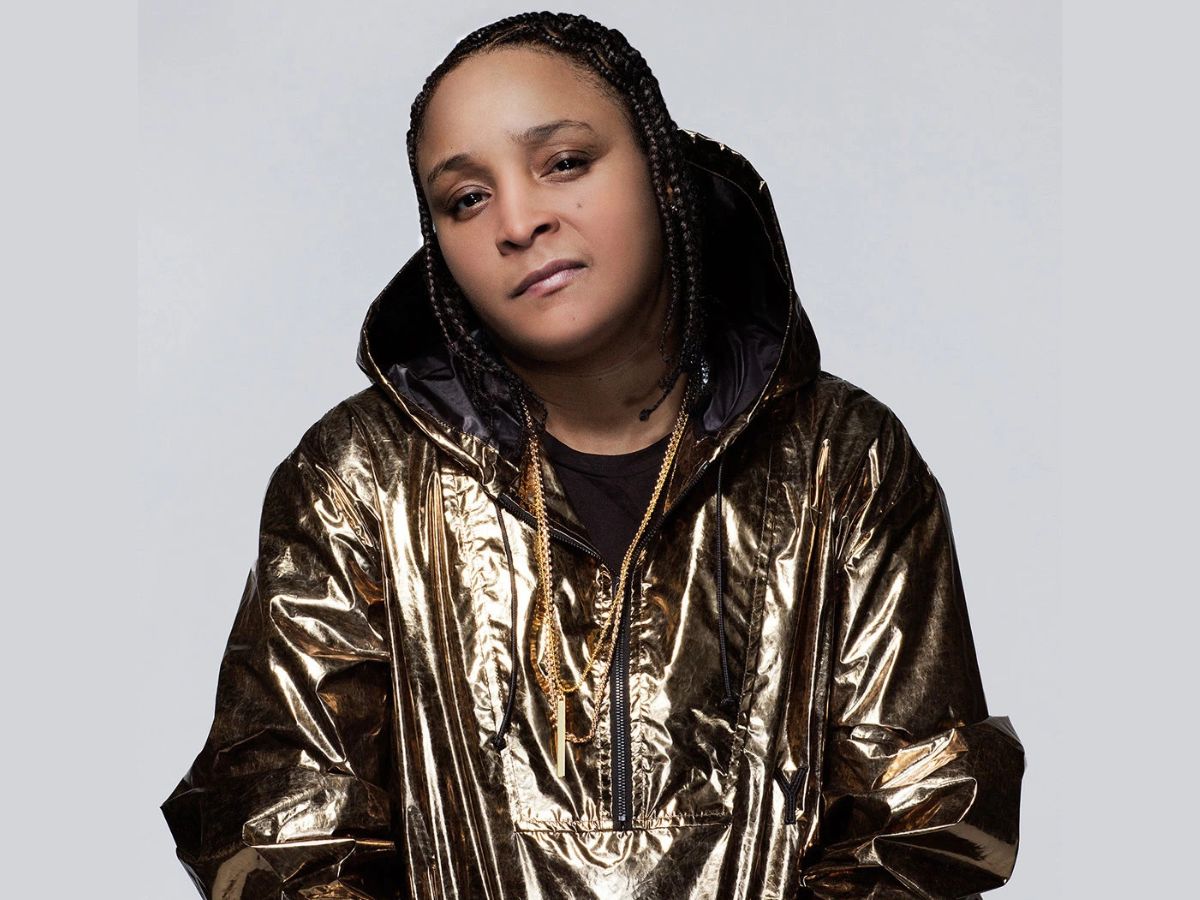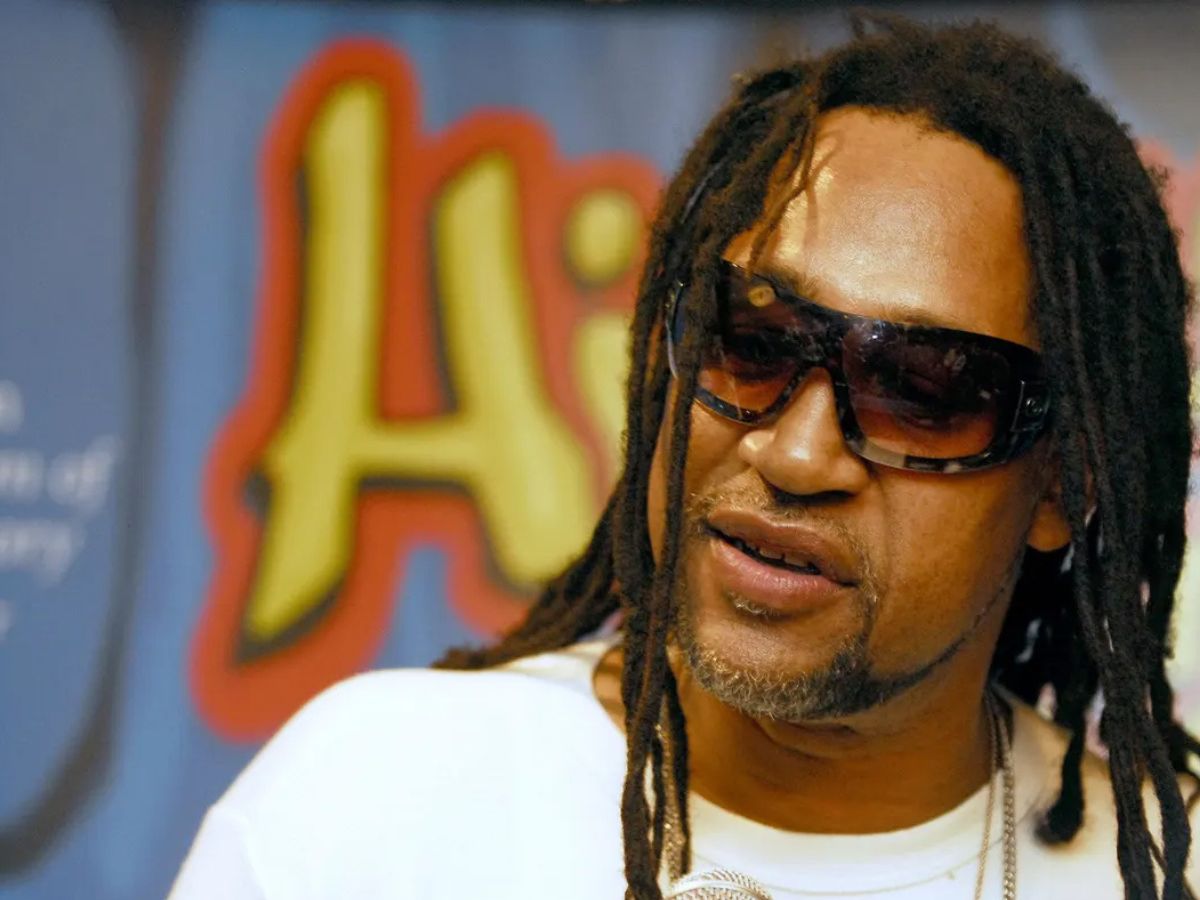

Hip Hop
Who Has Beef In Hip Hop
Published: December 30, 2023
Discover the latest news and rumors about beef in the world of Hip Hop. Find out who's feuding with who and get the inside scoop on the hottest rap battles.
(Many of the links in this article redirect to a specific reviewed product. Your purchase of these products through affiliate links helps to generate commission for AudioLover.com, at no extra cost. Learn more)
Table of Contents
Introduction
Hip Hop, a cultural movement that emerged in the 1970s in the Bronx, New York City, has not only revolutionized the music industry but has also been associated with heated rivalries and conflicts. This phenomenon, commonly known as “beef,” has become an integral part of the Hip Hop culture.
The roots of beef in Hip Hop can be traced back to the competitive nature of the genre itself. From the early days of block parties and freestyle battles, artists have been driven by the desire to prove themselves as the best, to assert their dominance and defend their reputation.
Beef in Hip Hop often takes the form of public feuds, freestyle rap battles, and diss tracks, where artists call each other out, exchange verbal blows, and engage in lyrical warfare. These conflicts not only provide entertainment for fans but also serve as a platform for artists to showcase their skills, release pent-up frustrations, and express their personal and social narratives.
Throughout the history of Hip Hop, beef has played a significant role in shaping the landscape of the genre. From the legendary rivalries between artists like Tupac Shakur and The Notorious B.I.G., to the ongoing clash between Drake and Pusha T, beef has captivated audiences and generated headlines.
However, beef in Hip Hop is not just about personal conflicts and egos. It is often influenced by larger social and cultural issues, such as racial inequality, systemic oppression, and societal injustices. Artists use their platforms to voice their opinions, raise awareness, and contribute to the ongoing conversations surrounding these issues.
In recent years, social media has played a pivotal role in the escalation and dissemination of beef in Hip Hop. Platforms like Twitter and Instagram provide artists with the ability to instantly communicate with their fans and engage in public confrontations. The immediacy and accessibility of social media have intensified beefs, sometimes escalating them into dangerous situations.
In this article, we will explore the historical background of beef in Hip Hop, delve into notorious rivalries that have shaped the genre, discuss current feuds in the industry, examine the impact of social media on beef, analyze the role of diss tracks, and explore instances of resolutions and reconciliations.
So, buckle up and get ready to dive into the world of beef in Hip Hop, a phenomenon that continues to captivate audiences and spark conversations both within and beyond the realms of music.
Historical Background of Beef in Hip Hop
Beef in Hip Hop has a long and storied history, dating back to the early days of the genre. In its early years, Hip Hop was characterized by block parties and freestyle rap battles, where artists would gather in parks and street corners to showcase their lyrical prowess and compete for respect.
These battles served as a platform for artists to assert their dominance and prove their skills to their peers and audiences. In this competitive environment, rivalries and conflicts naturally arose as artists sought to establish their name as the best in the game.
As Hip Hop gained mainstream popularity in the 1980s, with the rise of artists like Run DMC and LL Cool J, the competitive nature of the genre became more prominent. The birth of beef in Hip Hop can be attributed in part to the desire for recognition and the need to stand out in a rapidly growing and evolving industry.
One of the most notorious rivalries in Hip Hop history emerged in the 1990s between Tupac Shakur and The Notorious B.I.G., two iconic figures who were tragically cut short in their primes. What began as a friendship soon turned sour, fueled by personal conflicts, perceived slights, and the volatile atmosphere of the East Coast-West Coast rivalry.
The beef between Tupac and Biggie escalated through diss tracks, public interviews, and even violent altercations. These events not only marked a turning point in Hip Hop but also had a profound impact on the culture as a whole, leaving a lasting legacy as one of the most tragic and impactful feuds in music history.
In addition to the Tupac and Biggie beef, Hip Hop has witnessed other notable rivalries, such as Jay-Z vs. Nas and 50 Cent vs. Ja Rule. These conflicts captivated fans and sparked intense debates, ultimately shaping the direction of the genre and solidifying the reputations of the artists involved.
While beef in Hip Hop is often seen as negative and detrimental to the culture, it has also been a source of artistic growth and creativity. Diss tracks, in particular, have become a celebrated form of expression within the genre. Artists seize the opportunity to display their lyrical prowess, clever wordplay, and sharp wit, engaging in a lyrical battle of words that captivates audiences and provokes thought.
As we delve deeper into the world of beef in Hip Hop, it is important to recognize the historical context in which these rivalries emerged. They serve as reminders of the competitive nature of the genre and the complex dynamics that influence artists’ motivations, aspirations, and struggles.
Notorious Rivalries in Hip Hop
Hip Hop has boasted a number of notorious rivalries throughout its history, captivating audiences and shaping the course of the genre. These feuds have not only been characterized by intense musical battles but have also been riddled with personal conflicts, territorial disputes, and even tragic consequences.
One of the most iconic and tragic rivalries in Hip Hop history is the feud between Tupac Shakur and The Notorious B.I.G. Born out of a friendship turned sour, the East Coast-West Coast rivalry escalated to unprecedented levels, dividing the Hip Hop community and ultimately resulting in the tragic deaths of both artists.
The beef between Tupac and Biggie was marked by a series of diss tracks, including Tupac’s infamous “Hit ‘Em Up” and Biggie’s response, “Who Shot Ya?” The lyrics and aggressive delivery in these tracks turned the feud into a battleground of words, generating headlines and controversy.
An equally famous rivalry took place between two rap legends, Jay-Z and Nas. The beef between these two titans of the industry began with subtle jabs and escalated through diss tracks like “Takeover” and “Ether”. This highly publicized feud captivated fans and sparked fierce debates about who had the upper hand in terms of lyrical prowess.
Another notable rivalry in Hip Hop history unfolded between 50 Cent and Ja Rule. What started out as a personal dispute quickly turned into a full-blown feud that played out through diss tracks and public confrontations. This feud captured the attention of the masses, with both artists using their music and public personas to relentlessly attack one another.
These rivalries were not just about ego and personal conflicts. They reflected deeper issues within the Hip Hop community, such as regional pride, artistic competition, and a desire for dominance. The rivalries became a significant part of the artists’ legacies, symbolizing a pivotal moment in their careers and leaving a lasting impact on both the genre and the culture.
While some may argue that beef in Hip Hop is detrimental to the community and promotes negativity, it is important to recognize the artistic and creative aspects that emerge from these conflicts. Diss tracks, for instance, serve as an outlet for artists to showcase their lyrical abilities, clever wordplay, and storytelling skills.
Notorious rivalries in Hip Hop have shaped the genre, polarized fans, and propelled artists to new heights. Their impact reverberates through the history of Hip Hop, leaving behind a legacy of both triumphs and tragedies that continue to resonate with fans and artists alike.
Current Feuds in the Hip Hop Industry
Hip Hop, being a dynamic and ever-evolving genre, continues to witness ongoing feuds and conflicts within its industry. The competitive nature of the genre, combined with the spotlight and pressure that comes with fame, often leads to tension and rivalry among artists. Here are some of the current feuds that have captured the attention of fans and the media.
One of the most prominent feuds in recent years is between Canadian rapper Drake and American rapper Pusha T. The beef between the two erupted in 2018 when Pusha T released the track “Infrared,” which took shots at Drake. This ignited a chain of diss tracks, with Drake responding with “Duppy Freestyle” and Pusha T retaliating with the scathing “The Story of Adidon.” The feud showcased the power of diss tracks in provoking a response and intensifying the tension between artists.
Another notable feud in the Hip Hop industry is between Cardi B and Nicki Minaj. The rivalry between these two influential female artists has often played out publicly, both on social media and at industry events. The feuds have included heated exchanges, physical altercations, and diss tracks, creating tabloid headlines and dividing fans into respective camps.
Continuing with the theme of female rap rivalries, there has been ongoing tension between Megan Thee Stallion and Tory Lanez. The feud began after Megan accused Tory Lanez of shooting her in the foot during an altercation. The situation escalated with diss tracks and public statements, shining a spotlight on the importance of supporting and uplifting women in the male-dominated industry.
Feuds in Hip Hop are not limited to individual artists but can also involve entire collectives or regions. For example, the ongoing tension between the East Coast and West Coast continues to have a ripple effect in the industry. While not as explosive as the Tupac and Biggie feud of the 90s, this rivalry manifests in subtle ways, with artists often pledging allegiance to their respective coasts and engaging in friendly competition.
In addition to these high-profile feuds, there are often smaller-scale conflicts between aspiring artists and established names in the industry. These feuds often stem from personal disputes, perceived slights, or artistic differences. While not as widely publicized, these feuds can still have a significant impact on the individuals involved and their respective fan bases.
It is important to note that feuds in the Hip Hop industry are not limited to just verbal battles and diss tracks. They can also lead to real-world consequences, including physical altercations, strained professional relationships, and even legal issues. The intensity and impact of these feuds highlight the passion, ambition, and sometimes the pitfalls of the industry.
Overall, current feuds in the Hip Hop industry serve as testaments to the competitive nature of the genre and the inherent tension that arises when artists strive for recognition and success. While feuds can be divisive, they also stimulate creativity and fuel the fire within artists, pushing them to consistently raise the bar and deliver their best work.
Social Media’s Impact on Beef in Hip Hop
Social media has had a profound impact on beef in the Hip Hop industry, amplifying conflicts and intensifying rivalries like never before. With the rise of platforms such as Twitter, Instagram, and YouTube, artists now have instantaneous access to millions of followers, allowing them to communicate directly with fans and engage in public confrontations.
One of the key ways in which social media influences beef in Hip Hop is through the rapid spread of information. Within seconds, a simple tweet or Instagram post can reach a massive audience, generating immediate reactions and fueling controversy. Artists can quickly take shots at one another, escalating feuds in real-time and keeping fans on the edge of their seats.
Social media platforms also offer a space for artists to air their grievances and call out their rivals without any intermediaries. They can voice their frustrations, exchange insults, and even leak sensitive information, all in a matter of seconds. This direct and unfiltered communication creates a heightened sense of immediacy and drama, solidifying the notion that the entire world is witnessing the beef unfold in real-time.
Furthermore, social media has provided a platform for fans to actively participate in the beef, choosing sides and amplifying the feud. Discussions, arguments, and memes related to the feud flood timelines and comment sections, creating a sense of virtual battlegrounds where fans passionately defend their favorite artists. This level of fan involvement not only intensifies the beef but also boosts the visibility and relevance of the artists involved.
However, the impact of social media on beef in Hip Hop has not been without its drawbacks. While it provides a space for artists to express themselves and engage with fans, it can also lead to escalated conflicts and the potential for real-life consequences. The immediacy and accessibility of social media make it easier for beef to spiral out of control, with artists crossing personal boundaries and even inciting violence.
Furthermore, the public nature of social media feuds can have a detrimental effect on an artist’s reputation and mental well-being. The constant scrutiny and backlash from fans and critics alike can take a toll on an artist’s mental health and negatively affect their career trajectory. Artists must navigate the fine line between engaging in beef to maintain relevance and staying true to themselves as individuals and artists.
Despite these challenges, social media remains an integral aspect of beef in Hip Hop. It has forever changed the way artists communicate, engage, and feud with one another. The immediacy, accessibility, and viral nature of social media have brought a new level of excitement and drama to the world of beef, shaping the narrative of the industry for years to come.
The Role of Diss Tracks in Hip Hop Beef
Diss tracks have long been a prominent feature in the world of beef in Hip Hop, serving as a powerful tool for artists to assert dominance, exchange verbal blows, and defend their reputation. These tracks are carefully crafted lyrical onslaughts, designed to both entertain and provoke their rivals, as well as captivate audiences.
One of the key roles of diss tracks is to challenge an opponent’s skills and credibility. Artists utilize clever wordplay, punchlines, and metaphors to lyrically dismantle their rivals, exposing perceived weaknesses or flaws. Diss tracks become a battleground of words, where artists showcase their lyrical abilities and their ability to cleverly and creatively insult their adversaries.
Beyond mere insults, diss tracks often delve into personal attacks and expose sensitive information. Artists may reveal intimate details, rumors, or secrets about their rivals, aiming to embarrass or tarnish their reputation. These personal attacks add fuel to the fire, escalating the beef and intensifying the emotional weight of the feud.
In addition to challenging opponents, diss tracks serve as a platform for artists to express their own frustrations, tell their side of the story, and assert their own dominance. Through their lyrics, artists can reclaim their power, assert their individuality, and defend their artistry. Diss tracks become a means of reclaiming control within the narrative of the beef.
What makes diss tracks so impactful is their impact on the fanbase and the Hip Hop community at large. Fans eagerly await and dissect each line and verse, engaging in heated debates about who “won” the battle. Diss tracks become a form of entertainment, stirring up excitement and passion among fans who take sides and passionately defend their favorite artists.
However, diss tracks are not without their controversies. They often toe the line between artistic expression and outright disrespect. In some cases, diss tracks have resulted in violent altercations and even loss of life, perpetuating a cycle that can have disastrous consequences.
Nonetheless, diss tracks remain an integral part of Hip Hop culture. They have become iconic moments in the history of the genre, creating legendary battles and leaving a lasting impact on the artists involved. From Tupac’s “Hit ‘Em Up” to Eminem’s “The Warning,” diss tracks hold a special place in the annals of Hip Hop beef, showcasing the power of words and the art of lyrical warfare.
As the landscape of Hip Hop continues to evolve, diss tracks will undoubtedly continue to play a significant role in beef, giving artists a creative outlet to express themselves, engage their fans, and cement their place in the ever-competitive world of Hip Hop.
Resolutions and Reconciliations
While beef in Hip Hop often grabs the headlines and fuels the drama, it is important to acknowledge that not all conflicts are irreparable. Throughout the history of the genre, there have been instances where feuds have been resolved, and artists have found a path to reconciliation.
One notable example of resolution and reconciliation in Hip Hop is the ending of the East Coast-West Coast feud that arose in the 1990s. Following the tragic deaths of Tupac Shakur and The Notorious B.I.G., the Hip Hop community saw a shift in the narrative. Artists began to prioritize unity and collaboration over division. This change ultimately led to alliances forming between artists from different coasts, symbolizing a willingness to heal and move forward together.
In another high-profile reconciliation, Jay-Z and Nas set aside their differences after engaging in a lengthy and contentious feud. Their feud reached its pinnacle with the release of diss tracks, such as Jay-Z’s “Takeover” and Nas’ “Ether”. However, in 2005, the two rap legends surprised fans by appearing together on stage during a concert, signaling a resolution and an end to their feud. This moment not only showcased the growth and maturity of the artists but also served as a powerful example of reconciliation in the Hip Hop industry.
It is worth noting that reconciliations in Hip Hop can occur for various reasons. Sometimes, it takes a tragic event or the passage of time for artists to put their differences aside and focus on unity. In other cases, personal growth, increased self-awareness, and a desire for personal and artistic evolution play a role in the resolution of conflicts.
Furthermore, some artists are driven by a desire to set a positive example for their fans and future generations of artists. They recognize the influence they have on the culture and strive to showcase the importance of love, unity, and collaboration over division and animosity.
Reconciliations in Hip Hop are not limited to just individual artists. They can also involve entire communities and movements. For instance, the beef between the West Coast-based Death Row Records and the East Coast-based Bad Boy Records was resolved in part through the efforts of artists like Snoop Dogg and Diddy, who worked towards bridging the gap and fostering reconciliation between the two factions.
Resolutions and reconciliations in Hip Hop are not always easy or immediate. They require open communication, empathy, and a willingness to let go of past grievances. While some conflicts are ongoing, the possibility of reconciliation serves as a reminder that growth and unity are attainable within the Hip Hop community.
As Hip Hop continues to evolve, it is essential to celebrate and amplify stories of reconciliation, as they remind us of the power of forgiveness, growth, and the potential for positive change within an industry often associated with conflict and division.
Conclusion
Beef in Hip Hop is a phenomenon that has become deeply ingrained in the culture, shaping the genre and attracting worldwide attention. From historic rivalries like Tupac vs. Biggie to current feuds that dominate social media, beef in Hip Hop captivates audiences, generates headlines, and sparks passionate debates among fans.
The historical background of beef in Hip Hop reveals the competitive nature of the genre, stemming from its early days of freestyle battles. Notorious rivalries, such as Tupac vs. Biggie and Jay-Z vs. Nas, have left an indelible mark on the industry, forever altering its trajectory.
Social media has revolutionized the landscape of beef in Hip Hop, providing artists with direct access to fans and fueling conflicts through instantaneous communication. Platforms like Twitter and Instagram have amplified tension, serving as virtual battlegrounds for artists and their supporters.
Diss tracks have played a crucial role in Hip Hop beef, acting as weapons of lyrical warfare. These tracks challenge opponents, showcase artistic prowess, and engage fans in exhilarating debates. However, they also raise ethical concerns and can have real-world consequences.
Despite the intensity of beef, the Hip Hop industry has seen instances of resolution and reconciliation. Artists have put aside their differences, recognizing the importance of unity and collaboration over division. These moments of reconciliation serve as powerful reminders of personal growth, the potential for change, and the positive influence artists can have on their communities.
In conclusion, beef in Hip Hop is a complex and ever-evolving aspect of the genre. It reflects the competitive spirit, artistry, and societal dynamics that underpin the culture. While beef generates excitement and controversy, it is essential to acknowledge the potential for resolution, reconciliation, and growth within the Hip Hop community. As the genre continues to evolve, let us celebrate the creativity, passion, and unity that can emerge from the world of beef in Hip Hop.

